The Big Picture
Teachers at Squirrel Hayes First School in Biddulph, Staffordshire monitor every child’s use of learning behaviours in every single lesson. But why are they doing this? What are the benefits? Is it worth it?
Headteacher Erica Pickford explains that this data gives teachers and the school the ability to track and identify successful learning behaviours at both a whole school and ‘drilled down’ level. The information is then used in two ways:
- to inform the design of future teaching and learning opportunities more generally
- to support learners themselves in identifying and interpreting their own learning behaviours and making a stronger link to how these behaviours impact on not only their own success but that of their peers.
Thus behaviour problems are resolved and improved not through rewards and sanctions but through direct links to learning behaviours and their outcomes.
On a day to day level, looking for, collecting, analysing and acting on learning behaviour data has led to teachers having a deep understanding of every child’s learning energy and their inclination to learn and change. Teachers now know the balance and strengths of each child’s learning behaviours and, importantly, they are shaping their classroom culture and learning activities more precisely to meet those learning needs.
Back to the start
Let’s wind back a bit to see how all this has become possible and how it made a start in the school.
The headteacher came across and started work on Building Learning Power about nine years ago and even back then felt that the approach had the potential to make a difference to the pupils of Squirrel Hayes. Despite what the school’s name might suggest the school sits in one of the most deprived areas of the country. The proportion of disadvantaged children is well above national average and the proportion of pupils with SEN and/or disabilities is high. The school’s recent achievement of an Ofsted Good across all areas is testament to the school’s continuing commitment to adopt and adapt the approach for pupils throughout the school.
A focus of learning behaviours from the start
The children are introduced to learning dispositions as soon as they enter the nursery and reception classes. Here the school’s version of the learning behaviours that make up a resilient, resourceful, reciprocal and reflective learner are slowly brought into the language and culture of the classroom.
The school’s interpretation of the learning dispositions
Here we see how the dispositions have been interpreted in short form. Those of you who are familiar with the BLP model will notice some differences in interpretation from the original.
Resilience. Be ready, willing and able…managing distractions, being involved and concentrating, never giving up.
Resourcefulness. Investigating and exploring…finding out and exploring, being willing to have a go, asking questions like an investigator
Reciprocity. Being fair and working together…listen carefully to others, work well in a team, sharing wonderful ideas.
Reflectiveness. Creating and thinking…having my own ideas, making links, choosing imaginative ways of doing things
Teachers who first introduce the approach to pupils
Kate and Fay are the teachers responsible for introducing three and four year olds to the tricky ideas of learning dispositions. The behaviours are gradually introduced with the help of a set of friendly animal toys. The behaviours are looked for, talked about, praised and commented on as they happen. Kate and Fay relish their role in this key introductory stage and say they are often surprised by just how quickly the children seem to ‘get’ learning power. They rapidly come to see that when they behave in these ways, they become better learners.
So, how do they get this going?
Resilient Ruby
The first disposition to be introduced is resilience, simply because many of the children coming to the school seem to lack these essential behaviours when they arrive. Resilient Ruby – the ladybird – is attached to a lanyard. When teachers notice a child using these positive emotional behaviours in a determined way they are awarded a Resilient Ruby. Ruby is worn proudly around their neck for the whole session. Fortunately, there are lots of Ruby ladybirds hanging in the classroom so many of the children can be awarded one in a session.
Recording the actual behaviours
But the introduction of learning behaviours doesn’t stop with the award of a toy. The teachers record the actual behaviour that merited the award on special slips of paper and these slips are then sent home to parents. Through talk, rewards and records of the event children and parents come to recognise what learning powers are all about and realise the importance of using the behaviours.
What of the other three learning dispositions…
Later in the term, having got used to Ruby and her good learning behaviours, another three characters are gradually introduced.
- Resourceful Rupert – the tortoise
- Reciprocal Reece – the polar bear
- Reflective Rebecca – the lion
And these characters are talked about, noticed and awarded in the same way as Ruby.
Descriptions of how they were used
Here we see more slips, which explain what the child has done to merit the award of Reciprocal Reece and Resourceful Rupert.
By the end of their Reception year pupils are well aware of these broad learning dispositions, understand when they are behaving in that way when it’s pointed out by the teachers and increasingly behave in some of these ways without nudges or reminders.
Back to collecting and using the data
A scale of use
The recognition and development of learning behaviours is carried on through years one to four. After every lesson teachers make a quick note of every pupil’s effort for the learning behaviours being expected in that lesson. They use the following scale:
- Level 3 – Exemplary behaviour for learning
- Level 2 – Expected high standard of behaviour for learning
- Level 1 – Below expected standard of learning impacting on progress in the lesson
- Level 0 – Poor behaviour of learning impacting on their own and others progress in the lesson
Lesson by lesson
The end of every lesson is used as an opportunity to evaluate the impact of the expected learning muscle used. This is done through a carefully developed, age appropriate, learning dialogue. Each learner is encouraged to use this self-review to inform their future learning approaches and behaviours in order to maximise their success and potential. It’s meta-cognition firmly in action.
Learners at Squirrel Hayes are extremely proud of their learning achievements and challenges and look forward to celebrating and sharing each other’s success at the end of every session.
Longer term use
Every half term members of the school’s Teaching and Learning Team forensically interrogate the tracked BfL scores. They look for trends and surprises to inform personalised interventions for targeted learners or group/cohort actions. The impact of these interventions are measured and tracked to evaluate impact and inform strategic action planning across the school.
A whole school celebration of learning powers
The daily tracking is used to identify the ‘BLP star’ for each class every week. As part of the school’s weekly ‘Achievement Assembly’ attended by family and friends, each BLP star pupil is presented with a highly regarded BLP trophy and joins the school’s ‘Building Learning Power’ wall of fame.
The BLP wall of fame dominates the school’s main hall. The four major Learning Power dispositions are represented by different coloured bands on the display and it is in these coloured squares where learner’s find their proud faces displayed, according to the key BLP skill set being celebrated.
Beyond this weekly celebration all learners have the opportunity to earn BLP merits, and work towards the achievement of their Bronze, Silver, Gold and Platinum awards through their learning journey over time in the school.
Benefits for pupils
So it is that pupils at Squirrel Hayes First School come to know and celebrate their growing use of profitable learning behaviours. They are learning to control the feelings of learning, to notice things carefully, to keep their focus, to realise that being stuck is an interesting place to be, to carefully and willingly work out the sort of questions they will need, to dare to ask themselves ‘what if’, to work together harmoniously, to check things along the way and to ask themselves how they could have done something better. In short they are knowingly becoming self-regulating, meta-cognitive learners.

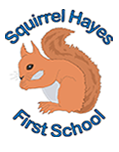
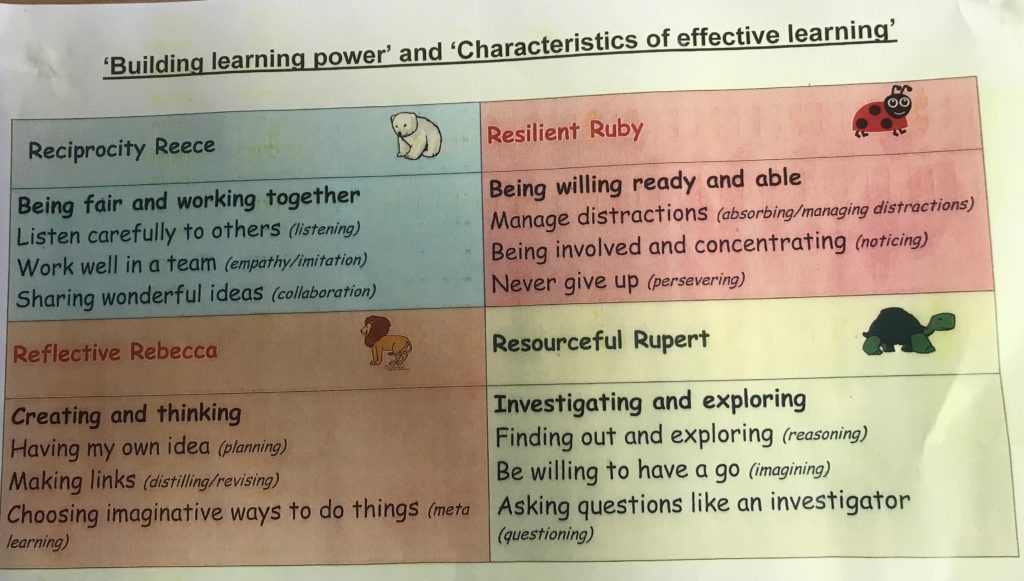
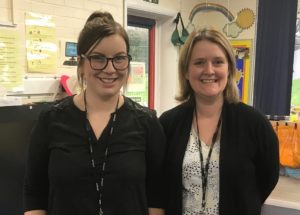
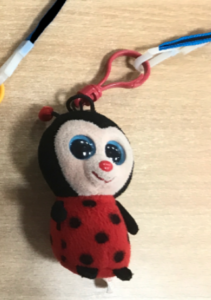
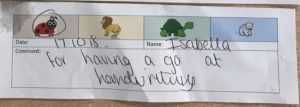
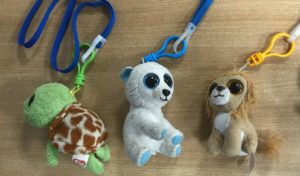

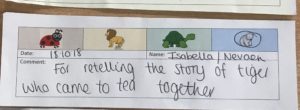
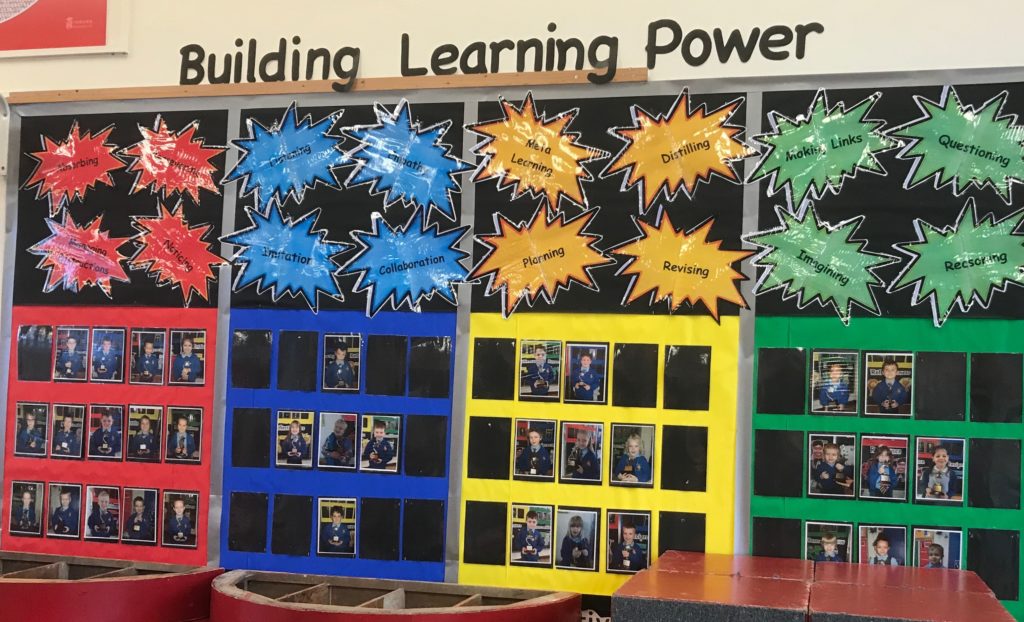
No comments yet.